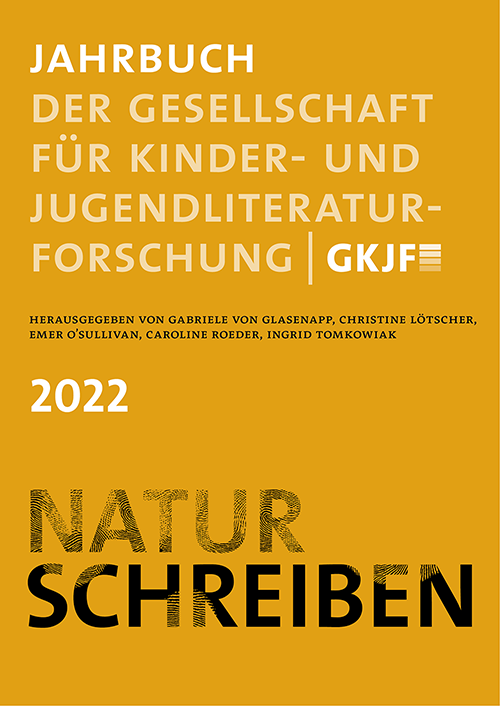Naturerleben in Mädchenbüchern um 1900
DOI:
https://doi.org/10.21248/gkjf-jb.88Abstract
[English title and abstract below]
Die poetische Ich-Person des angloamerikanischen Nature Writing seit Henry David Thoreau (1817–1862) begegnet der Natur sehr subjektiv und erschließt sie sich gefühlsmäßig, mit allen Sinnen und durch körperliche Bewegung. Dies ist als Gegenbewegung zur positivistischen Sicht zu sehen, die das Objekt Natur durch Sammeln, Beobachten und Kategorisieren und durch naturwissenschaftlich sachliches Beschreiben beherrschen und sich aneignen will. Die sehr emotionale identifikatorische Begegnung mit der Natur dagegen fußt auf der Naturphilosophie der Romantik und erfuhr in der deutschen Neuromantik eine Wiederbelebung. In der deutschen Jugendliteratur um 1900 fand sie nicht in nonfiktionalen Ich-Texten statt, sondern in Erzählungen, in denen die Autor:innen ihre Protagonistinnen stellvertretend in die Natur eintauchen ließen. Vorbereitend für diese Haltung waren die zivilisationskritischen Bewegungen der Naturheilkunde mit ihrer Betonung der Bedeutung von Licht, Luft und Wasser und der Lebensreform mit ihren Wander- und Freikörpergruppierungen. Ihr neues Naturkonzept fand seinen Niederschlag in Johanna Spyris Heidi, Waldemar Bonsels’ Das Anjekind, Lely Kempins Die heilige Insel und Drude von Gertrud Prellwitz. Diese Werke wurden Kultbücher der Mädchen in der Jugendbewegung und boten ein neues weibliches Körperbild an. Die Naturbetrachtung beinhaltet hier eine quasireligiöse Landschaftsrezeption, und das körperliche Erlebnis der schwärmerischen Hingabe an die Naturelemente geht bis zur Mystifikation.
Experiencing Nature in Girls’ Books Around 1900
The poetic first person of Anglo-American nature writing since Henry David Thoreau (1817–1862) encounters nature subjectively and explores it emotionally, with all their senses and through physical movement. This can be seen as a reaction to the positivist view that aims to master and appropriate nature through collecting, observing and categorising and through scientifically factual description. Emotional, identificational encounters with nature, however, are based on the natural philosophy of Romanticism and were revived in German neo-romanticism. In German young adult literature around 1900, it did not feature in first-person non-fictional narratives, but in stories in which authors let their protagonists immerse themselves in nature. The civilisation-critical movement of naturopathy through light, air and water and the Lebensreform (life reform) movement with its hiking and naturist groups paved the way. This new concept of nature found its expression in Johanna Spyri’s Heidi (1881), Waldemar Bonsels’s Das Anjekind (1913), Lely Kempin’s Die heilige Insel (1917) and Gertrud Prellwitz’s Drude (1920). These became cult novels for girls in the German Youth Movement and offered a new image of the female body. Observing nature became a quasi-religious reception of landscape, and the physical experience of enthusiastic devotion to the elements of nature went as far as mystification.
Downloads
Veröffentlicht
Ausgabe
Rubrik
Lizenz
Copyright (c) 2022 Jahrbuch der Gesellschaft für Kinder- und Jugendliteraturforschung

Dieses Werk steht unter der Lizenz Creative Commons Namensnennung - Nicht-kommerziell 4.0 International.





